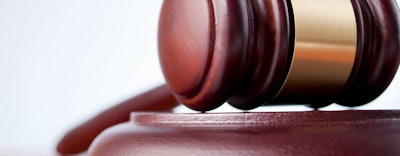
While it is the job of Congress or a state's legislature to enact laws, it usually falls on the court to interpret what Congress or the legislature intended when it passed the law. For example, the Second District Court of Appeal ruled that, while Florida law may require all public schools that participate in the Florida High School Athletic Association to acquire an automated external defibrillator (AED), train personnel in its use and register its location with the local EMS, the law did not require that the school actually use the AED in an emergency, as AB covered in 2013.
In Limones v. School District of Lee County (2015) Fla. LEXIS 625, the Florida Supreme Court sought to clarify the intent of the Florida Legislature when it passed the law. Among the questions it sought to address: did it just intend for the schools to have the equipment, or was the actual intent for the schools to use the AED to save lives?
RESUSCITATION DELAYED
Abel Limones was a high school soccer player for East Lee County High School. During an away game at Riverdale High School, Limones abruptly collapsed and stopped breathing at approximately 7:40 p.m. Riverdale's assistant principal called 911 at 7:43 p.m., while East Lee's coach and a nurse bystander performed CPR. The coach later testified that he called for an AED, and even though there was one on a golf cart parked near the soccer field's end zone, no one responded or retrieved it.
Emergency medical service personnel arrived on the scene at 7:50 p.m., used a different defibrillator to deliver a shock to Limones' heart and administered a series of intravenous medications. Limones was resuscitated at 8:06 p.m., 23 minutes after the 911 call.
Due to the delay in restarting his heart, Limones suffered severe and permanent brain damage. His parents sued the School Board of Lee County, claiming that it was negligent in failing to maintain an AED on or near the field, to make it available for use, or to actually use it. Had the AED been used on Limones within one to two minutes of the time he stopped breathing, they argued, he would not have sustained the catastrophic brain injury, which left him in a near persistent vegetative state that requires lifelong 24-hour care.
The Second District Court of Appeal, in affirming the trial court's decision, recognized that the school owed a duty to supervise its students, which in the context of student-athletes included a duty to prevent aggravation of an injury. In looking at the duty owed post-injury, however, the Second District ruled that reasonably prudent post-injury efforts did not require the school to provide, diagnose the need for or use an AED. The court also concluded that employees of the school were immune from civil liability under the Cardiac Arrest Survival Act.
RELATED:
Schools Required to Buy AEDs Don't Have to Use Them
Fitness Centers May Have Duty of Care Regarding AEDs
DUTY TO USE AED
On appeal, the Florida Supreme Court ruled that as a general principle, a party does not have a duty to take affirmative action to protect or aid another unless a special relationship exists. When such a relationship exists, however, the law requires the party to act with reasonable care toward the person in need of protection or aid.
In the present case, the Supreme Court found that it had already been established by the Florida courts that there is a special relationship between schools and their students. Based upon that special relationship, the Supreme Court found that the school is required to reasonably supervise its students during all activities that are subject to the control of the school, even if the activities occur beyond the boundaries of the school or involve adult students.
Therefore, since Limones was a student when he was injured, and was participating in a school-sponsored soccer game under the supervision of school officials, the Supreme Court found that the school owed Limones a duty of supervision and to act with reasonable care under the circumstances — specifically, a duty to take appropriate post-injury efforts to avoid or mitigate further aggravation of his injury. What appropriate post-injury efforts are, the court held, depends on the circumstances and may fluctuate with time, the student's age and activity, and the extent of the injury. Based on the fact that the school had an AED, and its use could have prevented further aggravation of his injury, the court ruled that the use of the equipment was within the school's duty of care.
In distinguishing the duty schools owe students from the duty owed by a commercial health club to an adult customer, which only requires employees of the club to reasonably summon emergency responders for a patron in cardiac distress, the Supreme Court noted that the adult customer and the health club stand in a far different relationship than a student involved in school activities with school board officials. In particular, the court noted that the proprietor-customer relationship most frequently involves two adult parties, whereas the school-student relationship usually involves a minor.
CLAIMING IMMUNITY
After concluding that the school owed a common-law duty to Limones, the court next considered the Second District's ruling that regardless of whether the employees were negligent, the employees of the school were immune from civil liability under the Cardiac Arrest Survival Act.
The law creates two classes of parties that may be immune from liability arising from the misuse of AEDs: users and purchasers. It's important to note that those who purchase the device, however, do not get immunity simply by purchasing and making the AED available. Rather, they are only entitled to immunity when the AED is actually used or attempted to be used. Therefore, the Supreme Court held that since it was undisputed that no actual or attempted use of an AED occurred in this case until emergency responders arrived, the school and its employees were not entitled to immunity.
LESSONS LEARNED
In remanding the case back to the trial court, the Florida Supreme Court is sending a few important messages to high school administrators. First, schools owe a common-law duty to students to supervise and — in the event of student injury — take reasonable measures to prevent aggravation of the injury. With advances in medical technology, schools need to know that this duty can change over time and that what is acceptable today may be a breach of duty tomorrow. Therefore, administrators need to make all reasonable efforts to protect their students, both pre- and post-injury.
Second, with more than 350,000 sudden cardiac arrests occurring in the United States each year, and a survival rate of less than two percent if the victim is not shocked within 10 minutes, school and athletic administrators need to know where their AEDs are at all times during an event and be ready to use them.
As the Florida Statute states, because of legal immunity, the school and its employees have nothing to lose if they try to help. By doing nothing, as this case illustrates, they stand to lose a lot. Ω
Attorney John T. Wolohan is a professor of sports law in the David B. Falk College of Sport and Human Dynamics at Syracuse University. Delana R. Williams is a senior sport management student at Syracuse.
This article originally appeared in the July/August 2015 issue of Athletic Business with the title "SHOCK TO THE SYSTEM"




































